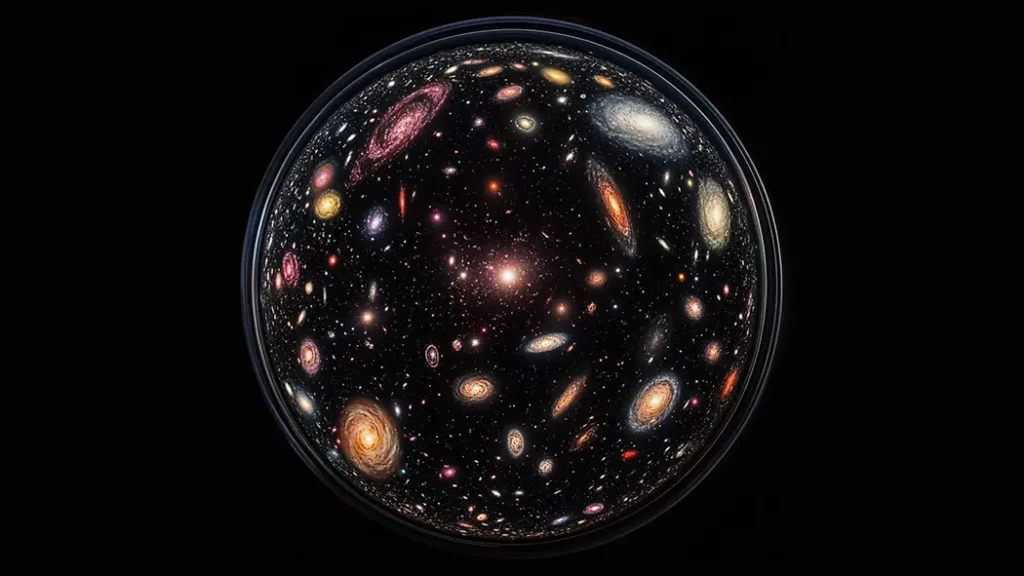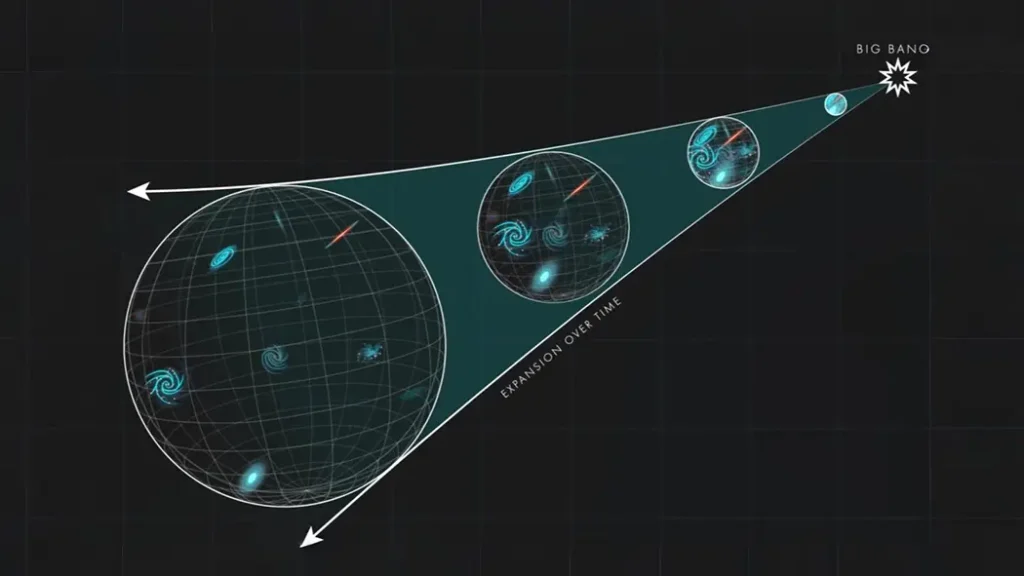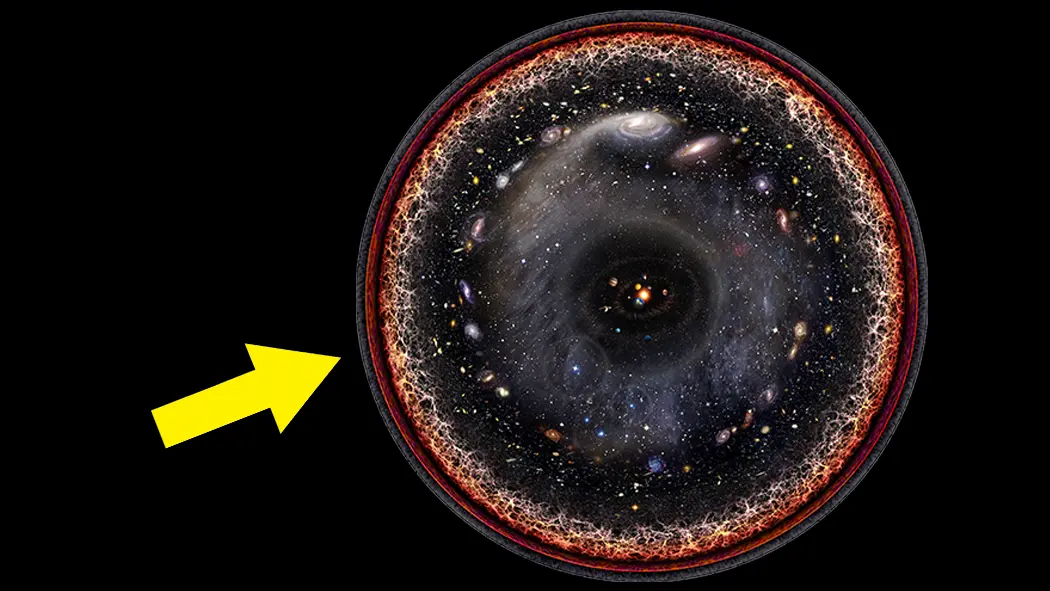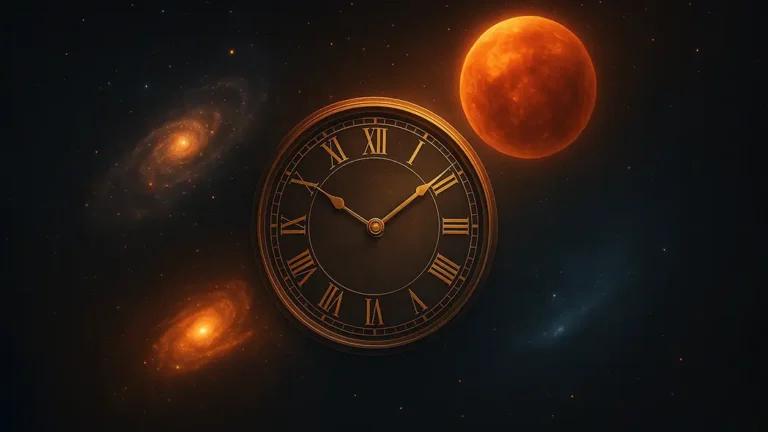When we look at the night sky, it feels endless. Stars, galaxies, and space stretch in every direction. But does it ever stop? Is there an actual edge of the universe?
These questions have fascinated humans for a long time. Let’s explore what scientists say about the edge of the universe, how far we can see, and what may lie beyond.
What Do We Mean by “Edge of the Universe”?
Before we go further, we need to understand what “edge” means here. When we think of an edge, we often imagine the end of something. Like the edge of a table. Or the edge of a cliff.
But space is not like a table or a cliff. It does not sit inside something else. It is not a shape with a border. It is more like a balloon that keeps growing.
So when we ask about the edge of the universe, we do not mean a wall or a boundary. We mean the farthest part we can see. We mean the limit of our view.
The Observable Universe
The universe is very old. Scientists believe it began about 13.8 billion years ago.
Light moves fast, but not instantly. It travels at a fixed speed. It takes time to reach us. So when we look at stars or galaxies, we are seeing them as they were in the past—not as they are now.
Because light has been traveling for billions of years, we can see far into space. The farthest light we can see comes from about 46.5 billion light-years away.
This huge bubble around us is called the observable universe. It shows everything we can see from Earth.

But this is not the edge of all space. It’s just the farthest light that has reached us. There could be more beyond it—more stars, more galaxies—but their light hasn’t had time to get here.
So when people say “edge of the universe,” they usually mean the edge of the observable universe.
Why Can’t We See Beyond the Edge of the Universe?
There are a few reasons. The first is simple: light from beyond has not had time to reach us. If something is too far, its light is still on the way.
Another reason is the expansion of the universe. Space is stretching in all directions. Some galaxies are moving away faster than light. That sounds strange, but it is allowed by the theory of general relativity.
This means their light will never reach us. They are beyond our reach forever.
So, the edge we see is not the real edge of everything. It is just the farthest distance light could travel since the beginning.
Is There a Real Physical Edge of the Universe?
Scientists do not think there is a physical edge. The universe does not end with a wall. If you traveled far enough, you would not bump into something solid.
Instead, space goes on. Maybe forever. Or maybe it curves back on itself.
Imagine the surface of a ball. It has no edge, but it is not infinite. You can keep walking in one direction and end up where you started.
Some scientists think the universe might be like that, but in more dimensions.
Is the Universe Infinite or Finite?
We do not know if the universe is infinite or finite. Both ideas are hard to imagine.
If it is infinite, it goes on forever. There is no edge, and no end.
If it is finite, it must loop in some way. Like the ball we talked about. But we do not see signs of such a loop yet.

The truth could be something we cannot yet understand. Our tools and methods are still growing.
What Lies Beyond the Observable Universe?
Scientists believe that space continues beyond what we can see. The unobservable universe could be many times bigger than the observable one. There may be countless galaxies, stars, and planets out there.
They are just too far away for us to detect. Their light has not reached us, and maybe never will.
Some parts of space may look very different. Others may look just like here.
We simply do not know. It is like standing in a fog. We can only see nearby trees, but we know the forest keeps going.
The Expanding Universe
Here is another important point. The universe is expanding. This means that space itself is stretching.
It is not that galaxies are flying through space like cars on a road. Instead, the road itself is getting longer.
The space between galaxies is increasing. Over time, galaxies move farther apart.

This makes the edge of the observable universe even more interesting. Some galaxies that we see now will soon be too far to see.
We are losing sight of parts of the universe.
The Cosmic Horizon
The edge of what we can see is sometimes called the cosmic horizon. It is another name for the edge of the observable universe.
It is like the horizon on Earth. You can only see a limited distance on Earth because the planet curves away. In space, you can only see a limited distance because of time and light.
Every person in the universe has their own cosmic horizon. If you lived in another galaxy, your view of the universe would be different.
This tells us how much space changes depending on where you are.
Is There Something Beyond the Observable Universe?
Some theories suggest more might exist beyond our universe. These ideas talk about the multiverse.
In a multiverse, our universe is just one of many. Each universe could have different rules and laws of physics.
We do not have proof of this. But some clues from math and physics point that way.
If true, the edge of our universe might not be the edge of everything. It could just be one bubble in a sea of bubbles.
Looking Back in Time
Time plays a big role here too. We think of the edge of the universe as far away in space. But it is also far back in time.
The farther we look, the older the light we see. When we look to the edge of the universe, we are looking close to the time when the universe began.
We see light from galaxies as they were billions of years ago.
At the farthest edge, we see the glow from the early universe. This light is called the cosmic microwave background. It is the oldest light we can detect.
Can We Reach the Edge of the Universe?
No, we cannot travel to the edge of the universe. Even at the speed of light, it would take longer than the age of the universe to get close.
And since space is expanding, the edge is always moving farther away.
It is like trying to chase a horizon that keeps running away. No matter how fast you go, it stays out of reach.
So, we explore by using light, not by going there ourselves.
Why Does the Edge of the Universe Matter?
You might wonder why the edge of the universe is important.
First, it helps us understand where we are. It tells us how big the universe is, and how it has changed over time.
Second, it helps test our ideas about space, time, and physics. When we look at faraway galaxies, we learn about the early universe.
We also learn about dark energy, which pushes space apart. And we try to find answers about the shape of the universe.
These are big questions. They help us know our place in the universe.
Final Thoughts
So, does the universe have an edge? Not a real edge like a wall. Not something we can touch.
What we have is a limit to what we can see. Beyond that, there may be more. Much more.
The universe might go on forever. Or it might be large but looped. Either way, the edge is not the end.
It is just the start of our curiosity.
Even though we cannot reach the edge of the universe, we can learn about it. We can use light and science to explore.
And that tells us something amazing. Even from our tiny world, we can touch the edge of space—with thought, with wonder, and with questions that never end.




